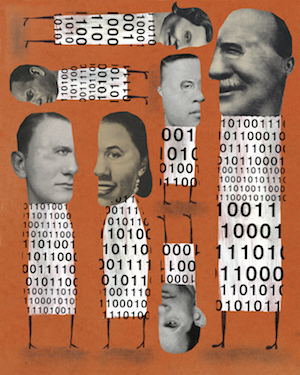LENS Health and Wellness
Modeling Infectious Disease
Can Mathematics Help Eradicate a Tropical Disease?
 IMAGE: DAVID PLUNKERT/THEISPOT
IMAGE: DAVID PLUNKERT/THEISPOTSchistosomiasis, a parasitic disease, strikes an appallingly broad swath of humanity. It afflicts old and young alike, causing fever, chills, abdominal pain, bleeding, organ damage and, in some cases, death. According to the World Health Organization (WHO), more than 218 million people carried the disease in 2015, making it second only to malaria in its reach.
Its symptoms are caused by parasitic worms that grow in freshwater snails, yet seek out human hosts to breed. Although the disease can be cleared from patients' bodies with a single dose of an inexpensive drug, it has proved difficult to eradicate.
Two Case Western Reserve University faculty members—Charles King, MD, professor of international health at the School of Medicine, and David Gurarie, PhD, a mathematics professor in the College of Arts and Sciences with a longtime research interest in public health—first teamed up years ago to battle schistosomiasis, and they're using complex modeling to do it.
Through collaborations with researchers at the University of Georgia and Imperial College in London, they're collecting data on field trials of new treatment strategies in sub-Saharan Africa. The pair has focused on medicine delivery methods—confirming whether it's more efficient to deliver medication to entire communities, for instance, or just to school-aged children, who often carry the greatest number of parasites. They also are examining new ways to prevent the disease by using human treatments and snail-control methods simultaneously.
Their research, which has been funded by the Bill & Melinda Gates Foundation, will help WHO update its treatment guidelines this year.
"Initially, people thought it would be easy to provide treatment [to people] or control snails to interrupt transmission," King said. "But all things ecological are more complicated than you expect." And once people are infected, he said, they can spread the parasite between communities. Treating the infection in humans, while also killing off snails that carry it, could more reliably bring disease transmission down in high-risk areas.
King and Gurarie are simulating outbreaks before they occur using a powerful mathematical model of the disease. In the process, they can see the effects of new interventions virtually.
"When you run a model in a computer, you can do many more experiments than you could in the real world and see the results more quickly," Gurarie said. "It lets you know, what would you need to achieve your treatment targets? What's most effective?" That's critical, because what works in one location may not work in another. Being able to calculate in advance which treatment will have the best outcome for a community could cut down on expensive trial and error in the field.
With that in mind, the pair developed a model to account for a staggering array of factors. It can simulate the impact on different demographic groups, breaking them down by age or profession. Fishermen and rice farmers, for example, spend much of their time in the water and are at higher risk for the disease. The model also can consider the effects of treatment frequency and estimate the percentage of the population who might decline care. It can even simulate the biology of the parasite itself to test how anti-snail agents may interrupt its life cycle.
In the future, Gurarie and King said, it may be possible for partner organizations to build a smartphone app running a simplified version of their model. Using that technology, public-health teams could quickly tailor treatment to each community's disparate needs.





